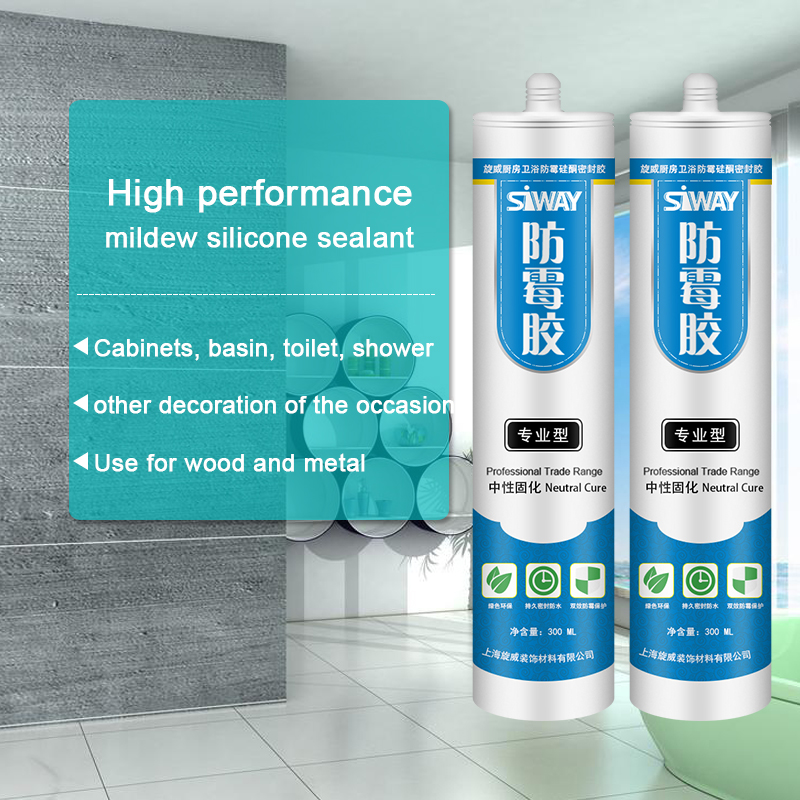Special Design for SV-666 Neutral silicone sealant for South Africa Factories
Short Description:
Description SV-666 neutral silicone sealant is a neutral curing glue single component, the modulus of the. It is specially designed for windows and doors caulking sealing general plastic doors and windows. It has good adhesion to glass and aluminum alloy, and has no corrosion. Where to use It is fit for multiple purpose sealing and bonding applications to form a silicone rubber adhering to adjacent substrates e.g. glass, ceramic, tile, wood and metal. Key Features 1. 100% silicone 2. Eas...
We are committed to providing easy,time-saving and money-saving one-stop purchasing service of consumer for Special Design for SV-666 Neutral silicone sealant for South Africa Factories, Our aim is to help customers realize their goals. We are making great efforts to achieve this win-win situation and sincerely welcome you to join us
Description
SV-666 neutral silicone sealant is a neutral curing glue single component, the modulus of the. It is specially designed for windows and doors caulking sealing general plastic doors and windows. It has good adhesion to glass and aluminum alloy, and has no corrosion.
Where to use
It is fit for multiple purpose sealing and bonding applications to form a silicone rubber adhering to adjacent substrates e.g. glass, ceramic, tile, wood and metal.
Key Features
1. 100% silicone
2. Easy to use
3. Waterproofing and weatherproofing
4. Primerless adhesion to most building materials
5. 12.5% movement capability
Technical data sheet
| Test standard | Test project | Unit | value |
| Before curing——25℃,50%R.H. | |||
| GB13477 | Flow, sagging or vertical flow | mm | 0 |
| GB13477 | surface drying time(25℃,50%R.H.) | min | 30 |
|
GB13477 |
Operating time | min | 20 |
| Curing time(25℃,50%R.H.) | Day | 7-14 | |
| Sealant curing speed and operating time will have different with different temperatures and temperature, high temperature and high humidity can make sealant curing speed faster, rather low temperature and low humidity are slower.21 days after curing——25℃,50%R.H. | |||
| GB13477 | Durometer Hardness | Shore A | 28 |
| GB13477 | The ultimate tensile strength | Mpa | 0.7 |
| Temperature stability | ℃ | -50~+150 | |
| GB13477 | Movement capability | % | 12.5 |
Certification
JC/T881-2001 12.5E;GB/T14683-2003 12.5E
Color
Black,White,Gray
Package
300ml in cartridge * 24 per box, 590ml in sausage *20 per box
Shelf life
12 months
Note
If you want the TDS or MSDS or other details, please contact with our sales person.
Ash Industries, is another preferred American supplier of contract manufacturing services you will find only at a Design-2-Part trade show at https://www.d2p.com.
Ash shows you how to utilize thermoplastic injection molding, silicone molding or plastic injection molding.
Thermoplastic injection molding is a manufacturing process that creates fully functional parts by injecting plastic resin into a pre-made mold. Thermoplastic injection molding has several sub categories, such as rapid injection molding, which is best utilized in fine tuning prototypes prior to a product being given the go-ahead for production.
Developers utilize the thermoplastic injection molding process for many applications, as it can produce anything form car door panels to cell phone cases with good accuracy and surface finish. What’s more is that it’s the industry standard for producing plastic parts, so developers can be certain they’re putting out a quality product if they go this route in the development process.
Here’s a closer look at thermoplastic injection molding:
Thermoplastic injection molding consists of injecting a thermoplastic resin into an already crafted mold to create parts in the shape of the mold.
A mold is made based off a CAD file.Such molds are typically made from aluminum or steel. After the mold is created, the thermoplastic resin is injected into it and then left to cure and form the part. The material is first fed into a heated barrel before being launched into the mold to cold and cure. Following curing, the part is removed from the mold and the process starts over until the part run is completed.
Thermoplastic injection molding can be accomplished with just about any engineering-grade plastic resin. But that’s not even including more general resins. Engineering grade resins are typically utilized to create final prototypes before manufacturing, while general resins are used to craft early prototypes or parts of a product that are of lesser importance. General resins refer to the likes of ABS, nylon, PET, polypropylene, polyethylene and TPE. Engineering-grade resins consist of lexan, noryl, valox and ultem. The plethora of pastic resins that can be processed via thermoplastic injection molding allows product developers to experiment with different materials and surface finishes for their products.Thermoplastic injection molding can be implemented for prototyping, short-run and long-run manufacturing due to its speed, quality of finished parts and the variety of general and engineering-grade resins that parts can be produced.
Liquid injection molding, or LIM, or known as silicone molding is a production process commonly used to make parts that need to withstand extreme conditions, regardless of the industry.
While silicone molding is best used for short and long run part production, it can also be utilized in the final stages of the prototyping process as well, as the process permits engineers to experiment with different material configurations to fine tune the product before it is green-lit for production. Plus, since a mold needs to be created for the process to take effect, product developers can save time and money by using LIM for both final prototyping and production processes.
3M Sealants Manual Applicator Demo



